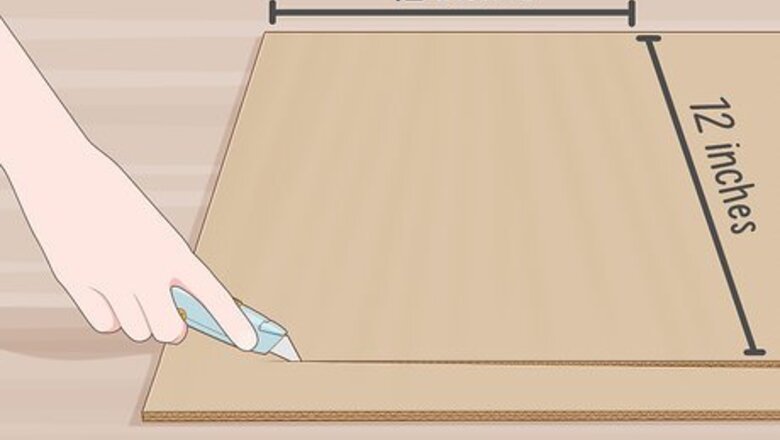
views
Forming the Base
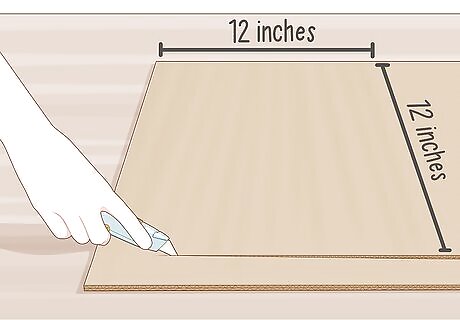
Get a sturdy cardboard or wooden square to put your mountain on. This will be the base that you build your mountain on. Have an adult use a razor knife to cut this square to be slightly longer and wider than you want your mountain to be. For example, if the dimensions of your mountain will be 10 by 10 inches (25 by 25 cm), then your base should measure about 12 by 12 inches (30 by 30 cm). You can buy a wooden square to use a base at any art supplies store. If you’d rather use cardboard, just use any old piece of a cardboard box!
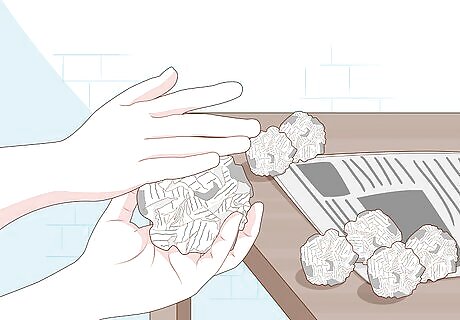
Scrunch up a sheet of newspaper into a ball and tape it together. Put masking tape over the newspaper to make sure it stays bundled up. Do this a few times to create a collection of scrunched-up newspaper balls that you can use to build your mountain. You’ll probably need about 5-10 balls of paper, depending on how large you want your mountain to be. There’s no set size that your newspaper balls should be; you just need to make sure that they’re dense enough to be sturdy and to support the papier-mache and paint that you’ll put on them. You can also use aluminum foil to create these balls. Although these are sturdier, they’re also heavier than newspaper.
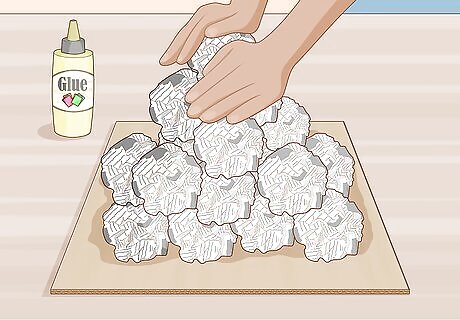
Glue these balls to the base to make a rough mountain shape. First, glue a few newspaper balls to your base to create the bottom layer of the mountain. Make this bottom layer as wide and long as you want the mountain to be. Then, glue the rest of the balls on top of these first balls and position them in a way that makes a rough mountain shape. For example, if you want your mountain to be wide and flat, position your newspaper balls so that they create a wide, flat mountain surface. If you want your mountain to have a high peak, make a long, narrow ball and position it so that it points upwards. You can just use ordinary white craft glue for this project.
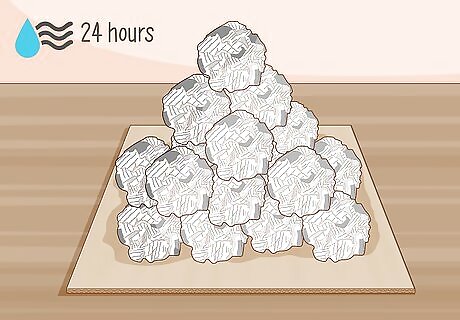
Allow the glue 24 hours to dry. This will give your newspaper balls enough time to become set in their positions. You may need to hold some of the newspaper balls in place for a little while (e.g., 30 minutes) if they were glued in an unstable position.
Making and Applying the Papier-Mache
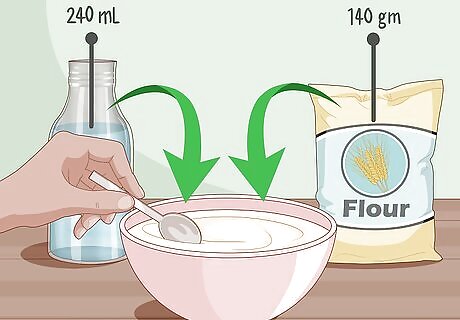
Mix equal parts of water and flour together in a medium-sized bowl. Pour 1 cup (140 grams) of flour and 1 cup (240 mL) of water into a bowl. Stir this mixture continuously until all the lumps of flour are completely mixed with the water. Add a dash of salt to the mix if you’re worried about the possibility of mold growing on the mountain. Some people prefer to heat up this mixture over low heat in order to get a smoother consistency. However, this isn’t absolutely necessary.
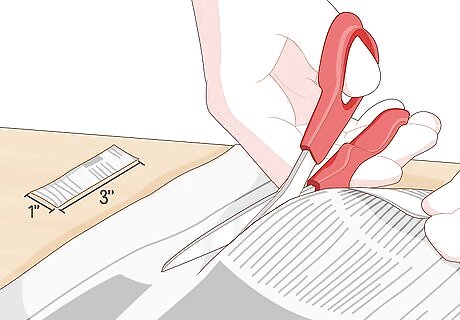
Cut some newspaper into long strips about 1 by 3 in (2.5 by 7.6 cm) long. Use scissors or simply rip up some newspaper in order to make these strips. You can make them longer than 3 inches (7.6 cm) if you want, but keep in mind that they’ll become more likely to rip and less easy to control if you make them too long.
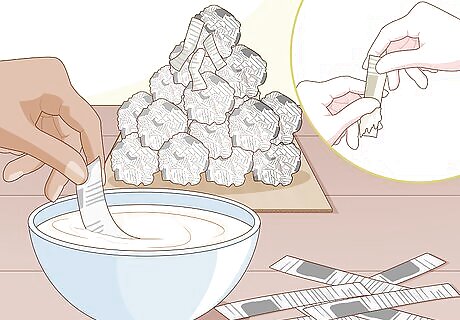
Dip a newspaper strip into your flour paste and put it on your mountain. As you remove the newspaper strip from the paste, slide it in between your thumb and forefinger to get any excess paste off of the strip. Then, lay it horizontally along the side of your mountain. It’s important to remove the excess paste from your newspaper strips in order to cut down on the time it takes the papier-mache to dry. Don’t worry about making the strip look perfect when you go to put it on your mountain. You’ll have a chance to do that later.
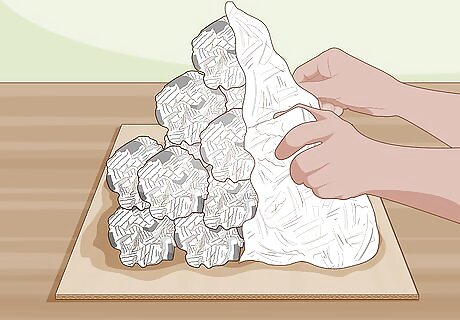
Scrunch or smooth out the strip as needed to add texture. Use your fingers to either push the 2 ends of the strip you laid down closer together or pull them further apart. Scrunch the strip to make a rough or rocky spot, or smooth it out to give a flat “hilly” appearance to your mountain. Be very gentle when handling your newspaper strip; you may accidentally rip it when you’re smoothing it out.

Repeat this process until you have a layer of strips on the mountain. Continue to lay more strips along the surface of your mountain until it’s completely covered. If the surface seems flimsy or looks thin, feel free to add a second layer.
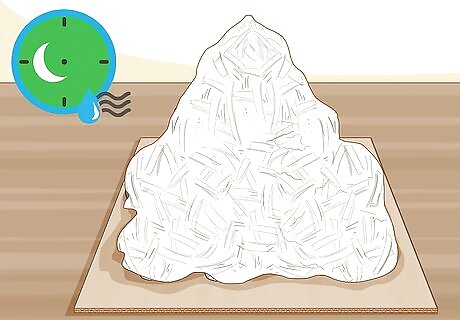
Leave your mountain to dry overnight. Papier-mache requires at least a few hours to dry, but leaving it overnight will help ensure that it’s as dry as possible before you go to paint it. For best results, leave it to dry somewhere it won’t be exposed to too much moisture. For example, avoid leaving it to dry in a bathroom or moldy garage.
Finishing the Mountain
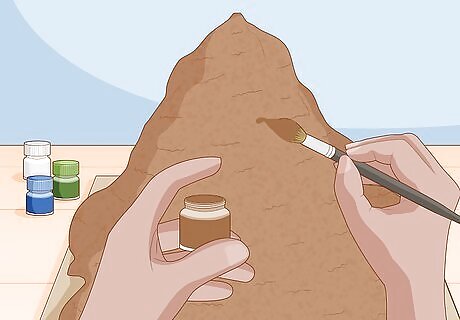
Paint your mountain with a water-based paint to give it some color. Use a variety of greens, browns, blues, and whites to depict any grass, rocks, rivers, or snow you want to have on your mountain. Be sure the papier-mache is completely dry before you begin to paint. If you’re creating this mountain for other people to look at, create a legend in the corner of your base using these paint colors to indicate what each color represents. Quickly make a mountain model for a school project. "I had to make a model of Mount Fuji for a project I was presenting on Zoom. This guide was so helpful and easy to follow along. I realized I only needed to let the newspaper balls set for 5 minutes before adding the papier mache, which allowed me to finish up my model super fast." - Alice R. Complete geography assignments with a realistic mountain model. "I used this article to make an accurate model of the Andes Mountains for a class project. The step-by-step instructions really helped me shape the base, add papier mache for texture, and paint it to look real. Thanks to this guide, I was able to turn in an awesome mountain model for my geography assignment." - Khalil S. Build a sturdy, realistic-looking mountain model. "I needed to construct a mountain model for a school project, and this tutorial was perfect. It showed me how to make a solid base and detailed surface. Now, I know the techniques to create a mountain model that looks real and also holds up nicely. This was so useful for finishing my project." - Sumiaya W. Get desired effects by using the right paints. "I liked the tips for painting the mountain to show different land features. It would be helpful to specify using acrylic or tempera paints for best results. I'm glad I learned that sprinkling sawdust on the wet paint makes the grass look more 3D. The painting advice helped me get the mountain looking exactly how I wanted." - Andorra B. Did you know that wikiHow has collected over 365,000 reader stories since it started in 2005? We’d love to hear from you! Share your story here.
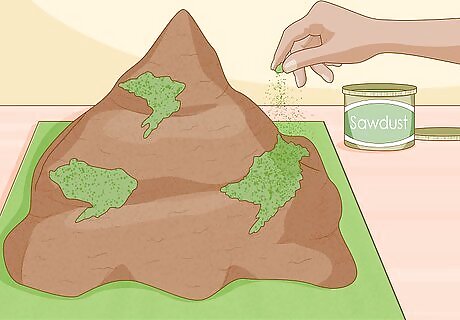
Sprinkle green sawdust on your mountain for more textured grass. This isn’t completely necessary, but many enthusiasts use green sawdust or shredded pieces of green paper to make their “grass” more three-dimensional. Be sure to do this while the paint is still wet so that the dust sticks to the green paint. You can buy green sawdust or paper at any arts and crafts store.
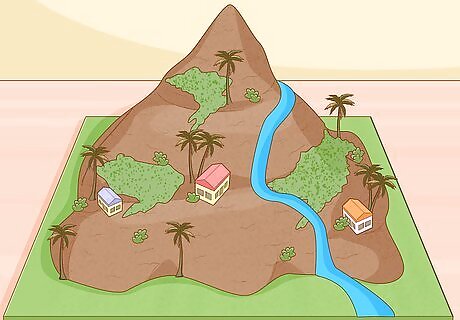
Add artificial trees, buildings, and any other structures you want to have. Glue these to your mountain after the paint has dried. You can buy these types of add-ons at most arts and crafts stores and any store that sells modeling kits. You can also use lichen to create little trees and bushes for your mountain.

















Comments
0 comment